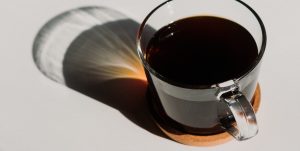Coffee is an integral part of my life, and giving it up is hard. However, coffee lovers will agree that few things are as bad as a poorly brewed cup of coffee. If your coffee doesn’t taste good, you won’t be able to work effectively. What does bad coffee taste like?
Contents
What Does Bad Coffee Taste Like?
Bad coffee tastes like burnt beans. It’s bitter, and it’s not very pleasant to drink. It might have been under-roasted if your coffee has an unpleasant sour aftertaste. If your coffee tastes burnt, you can be sure the roaster didn’t take the time to properly calibrate their equipment.

A good cup of coffee should taste sweet and clean with a smooth finish. The flavor of the roast will come through more prominently than any other flavor—even more than the origin of the bean itself. The best way to avoid bad-tasting coffee is to ensure that it stays fresh and doesn’t become stale or moldy before you drink it.
What to Look For in Bad Tasting Coffee
Whether you’re making it at home or ordering it at a cafe, there are some tell-tale signs that you’re drinking something bitter and awful.
It Is Bitter
The coffee is not just bitter; it is over-extracted and harsh. The bitterness lingers on your tongue for minutes after each sip, making you want to spit out the liquid in your mouth.
There Is No Sweetness or Body Present
The other flavors are missing from the cup of coffee. The lack of sweetness means no milkiness in the mouthfeel and no depth or richness from any other flavor notes that might be present in a more balanced cup of coffee.
The lack of body makes it seem like there isn’t anything substantial in your mouth—just hot liquid with nothing behind it.
The Acidity Is Overwhelming and Unpleasant
You can almost taste the acids in the brew caused by over-extraction or poor quality beans or water used during brewing. Acidity often hits first when tasting lousy coffee because it’s an easy thing to detect in your mouth.
Reasons for the Bad Taste of Coffee
So many other factors can make up a bad cup of joe.
- Over-extraction (which makes for bitter, acidic coffee)
- Poorly roasted beans (which result in low flavor)
- Low-quality water (which leads to underwhelming flavor)
- Under-extraction (which results in weak coffee)
Over-Extraction
The most common cause of bad-tasting coffee is over-extraction, which happens when you brew your coffee too long or use too much ground per cup of water.
Coffee will continue to brew even after you remove the grounds from the water—this means that if it sits for too long after brewing, its acidity will be heightened by over-extraction.
Poorly Roasted Beans
Coffee beans must be roasted properly to have good flavor. Coffee beans are usually roasted at a temperature between 392 degrees Fahrenheit and 455 degrees Fahrenheit though they can burn quickly if roasted too long or at a too high temperature. The result is a burnt taste and an unpleasant smell.

Water Quality
Tap water can leave an unpleasant flavor in your coffee. If you’re on a municipal water system, it may have high levels of chlorine or other chemicals that affect the taste. A good filter can help. If you have well water, try running it through several buckets to eliminate sediment before using it in your brewer.
Under-Extraction
Under-extraction is a common cause of bad taste. It happens when the coffee is not extracted enough, and the water does not run through all the coffee grounds. The result? Your coffee will taste weak, bland, and have an unpleasant aftertaste.
Here are some tips to avoid under-extraction:
- Use a burr grinder instead of blade grinders that produce uneven grounds.
- Don’t tamp your coffee too hard or soft so as not to compact or loosen it up too much.
- Use a scale to measure your dose.
Inadequate Water Temperature During Brewing
The water used for brewing should be as hot as possible to extract more flavor from the ground beans during brewing. If you do not heat your water enough, there will be minimal aroma and flavor extraction from your ground beans.
Related Questions
What Is Good Coffee Supposed to Taste Like?
Good coffee should be smooth and balanced. The prominent flavor you should be able to taste is chocolatey, though there might be other flavors like nuts or fruit mixed in. You should not get an off-taste from your coffee, which means that you should be able to drink it black with no problems.
What Do You Do With Bad Coffee Grounds?
You can use bad coffee grounds as a fertilizer in your garden, use them in a homemade face scrub, or as compost for your garden or worm bin.
Conclusion
Bad coffee is bitter, acidic, or sour. It’s thin and watery. It tastes like it has been sitting on the burner for hours. Reasons for the lousy taste include over-extraction, poorly roasted beans, inadequate water quality, and under-extraction of coffee.




